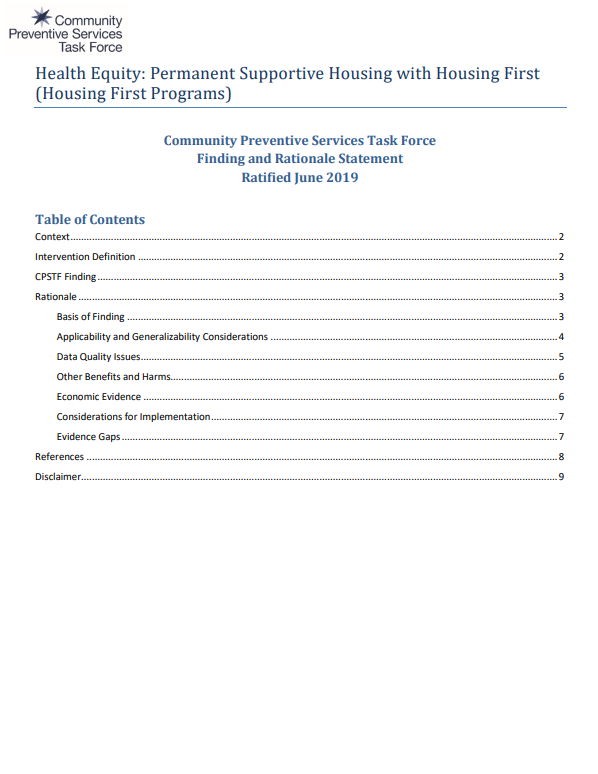Headline
Permanent supportive housing programs with a “Housing First” approach can improve health outcomes and reduce acute care use for people experiencing homelessness with disabling conditions.
Context
Almost 50 percent of people experiencing homelessness have a disabling condition. “Treatment First” programs emphasize that individuals should take initial steps toward treatment and sobriety to be eligible for permanent supportive housing. “Housing First” programs provide time-unlimited housing to people experiencing homelessness with disabling conditions with no requirement of sobriety. This systematic review evaluates the effectiveness and costs of Housing First programs compared to Treatment First programs or treatment as usual (TAU), including health care and temporary housing.
Findings
Across 23 studies, clients in Housing First programs with disabling conditions (excluding those with HIV) experienced greater housing stability, decrease in homelessness, improved quality of life, and reductions in emergency department (ED) use and hospitalizations than those in the control groups. However, there were no significant differences in physical/mental health or substance use between those in Housing First and Treatment First/TAU. The three evaluations of interventions for clients living with HIV found greater housing stability, reduced homelessness, improvements in physical and mental health, reduced mortality, and reduced ED use and hospitalizations. The economic benefits also exceed the intervention costs for Housing First Programs (see this article for more detail on the economic analysis).
Takeaways
When compared with Treatment First programs, Housing First programs offer tangible benefits to people experiencing homelessness with disabling conditions and also show economic benefits. Housing First programs are also likely to advance health equity because homelessness is associated with marginalized populations such as people with low incomes or people of color.

